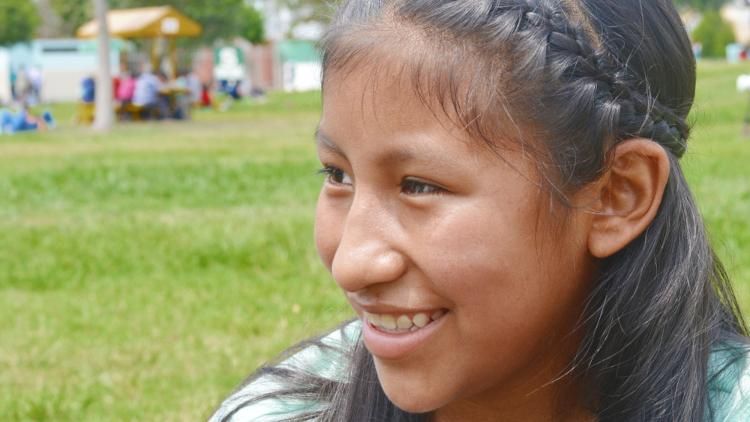Saving Two Spirit and Indigenous LGBTQ+ Youth
Author: Dr. Pamela Jumper Thurman and Dr. Barbara Plested

American Indian Heritage Month elevates the diverse cultural history of tribal nations and focuses attention on deep disparities that impact our communities. This year, while a virulent pandemic continues, leading child and adolescent medical groups have designated a national emergency for child and adolescent mental health that disproportionality affects communities of color. Many tribal communities are in remote reservation or rural areas, adding to the challenge of accessing resources to reduce risk, promote well-being and strengthen family connectedness. But new tools are now available for families with LGBTQ and Two Spirit-identified children, some of the most invisible and vulnerable among us.
We cannot forget that these and related health crises are deeply rooted in historical traumas that American Indian families and communities have experienced through the loss of land, culture, and affirming childrearing practices that were severed by enforced boarding schools that sought to obliterate Native culture. However, the term historical is misleading. This issue is not in the distant past and continues to have a significant impact today.
As Natives, we are resilient, but still hold the painful legacy of relocation and enforced residential schools that resulted in disruption of our family circles. Much of traditional parenting knowledge was set aside and an intergenerational cycle of institutional child abuse instilled shame and a sense of isolation.
The loss of traditional ceremonies and values of caring for our children and nurturing self-worth resulted in a deterioration of our communities, our families, and our health. We must pull from our resilience to reinvigorate the healing process and though we currently have far more resources to address substance use, violence, suicide, and other serious health issues, our rates are still higher than the general population.
Today, American Indian youth are two-and-a-half times more likely to attempt suicide compared with non-Native youth; they experience PTSD more than twice as often as the general population; they report substantially higher rates of lifetime use and last 30 day use compared with general population youth of alcohol, marijuana, and other illicit drugs; and they are overrepresented in the foster care system.
Another lasting impact of historical disruption and efforts to destroy tribal culture has been the denigration of tribal members who held respected spiritual and social roles related to diverse gender identities. Often called “Two Spirit” today, these identities transcended binary concepts of male and female and included healers, leaders, and valued members of tribal communities. Although the term Two Spirit may hold some controversy, it is now widely recognized, not as a specific definition of gender or sexual orientation, but as an umbrella term inclusive of the spiritual aspects of identities that cross gender boundaries and a recognition of the spectrum of gender diversity in our human family.
Decades of denigration of Native culture and forced religious conversion in boarding schools marginalized gender and sexual diversity within the tribes and led to social, cultural, and family rejection. Marginalized within tribal and mainstream communities, Two Spirit and LGBTQ American Indian youth are at significantly higher risk for a range of serious health concerns related to social stigma, compared with non-Native peers.
Two Spirit and LGBTQ Indigenous groups have worked diligently to increase awareness of the strengths and needs of Two Spirit and LGBTQ American Indian youth through increased visibility and support to foster cultural pride and to affirm their diverse identities. Yet, it is critical to provide accurate information and guidance to help parents, families, and caregivers, including foster parents, learn to support and affirm Two Spirit and LGBTQ youth to build healthy futures and to strengthen family relationships.
This past year, we have collaborated with the Family Acceptance Project to develop the first evidence-based family support resources to help Indigenous families to decrease family rejection and increase support for Two Spirit and LGBTQ children. This includes developing a series of Healthy Futures posters that help parents, caregivers and others to understand the powerful role that families have on their LGBTQ children’s risk and well-being. FAP’s research has identified more than 100 specific family rejecting behaviors that contribute to increased risk for suicide, depression, drug use, HIV, and other health risks and that are experienced as traumatic for these youth, as well as specific family-accepting behaviors that protect against risk and promote well-being. These new posters for American Indian families and communities are a first — showing parents and caregivers specific ways to help reduce their LGBTQ and Two Spirit children’s risk for suicide, substance abuse, and HIV and to increase hopefulness, self-worth, and overall health.
Families and caregivers that learn to support their Two Spirit and LGBTQ children strengthen all families and communities.
Dr. Pamela Jumper Thurman and Dr. Barbara Plested are co-directors of Council Oak Training and Evaluation, Inc. based in Oklahoma and Colorado. They have collaborated with many diverse tribal nations to plan, implement and evaluate prevention and intervention programs to address critical health issues for more than 30 years. The posters are available to download in 4 sizes at: https://familyproject.sfsu.edu/content/family-acceptance-project-healthy-futures-posters-american-indian-communities
Original Article on The Advocate
Author: Dr. Pamela Jumper Thurman and Dr. Barbara Plested





